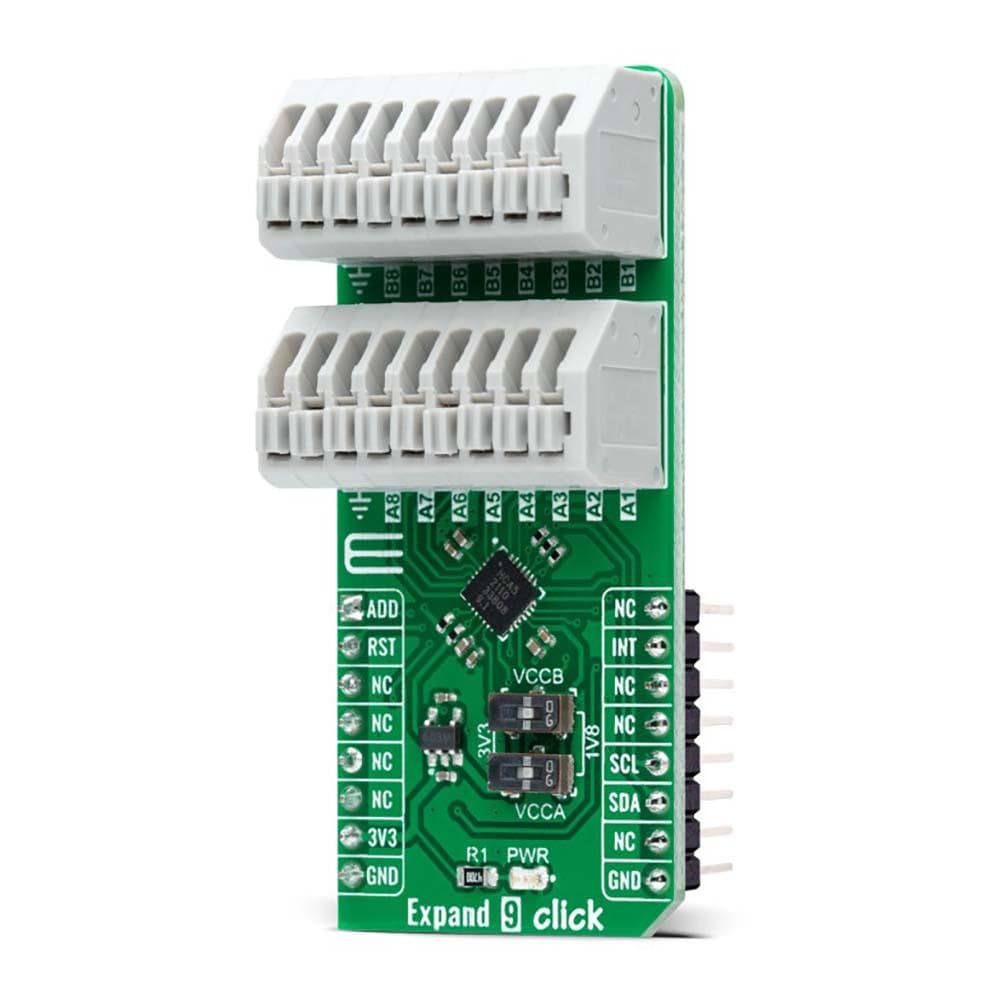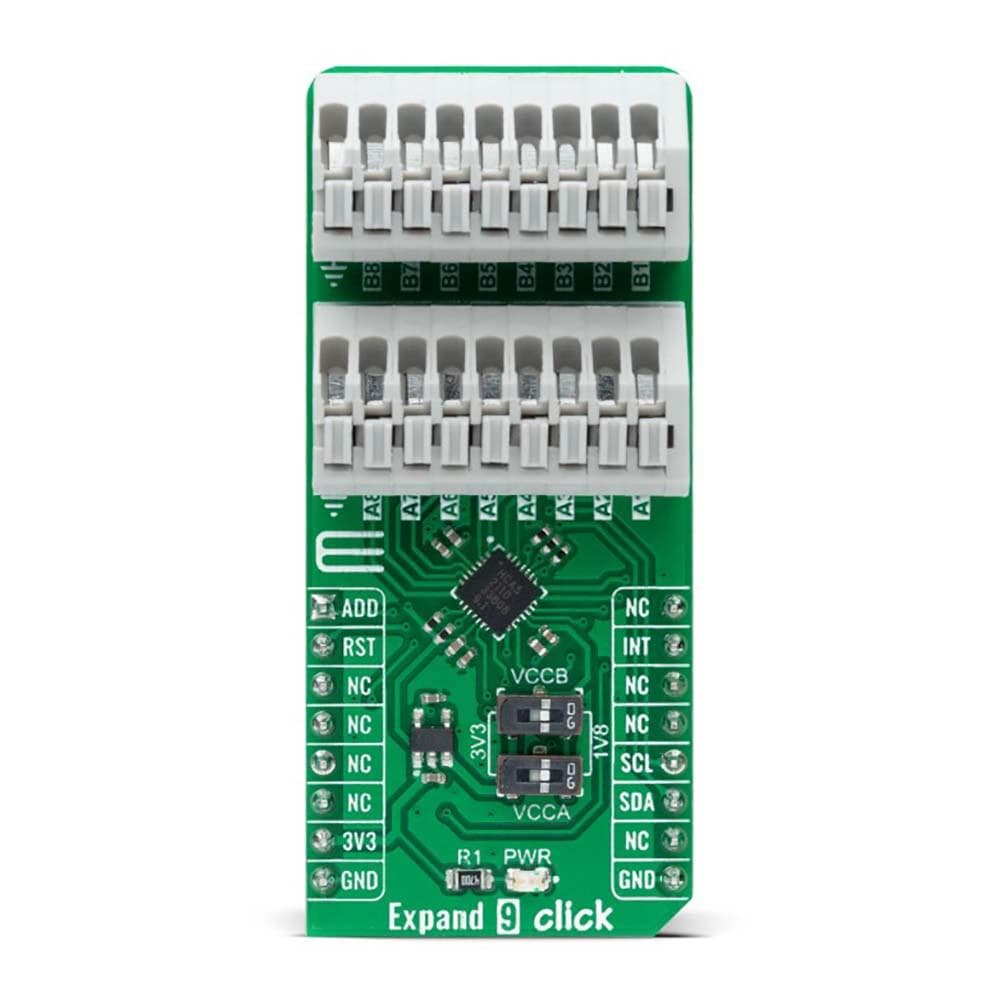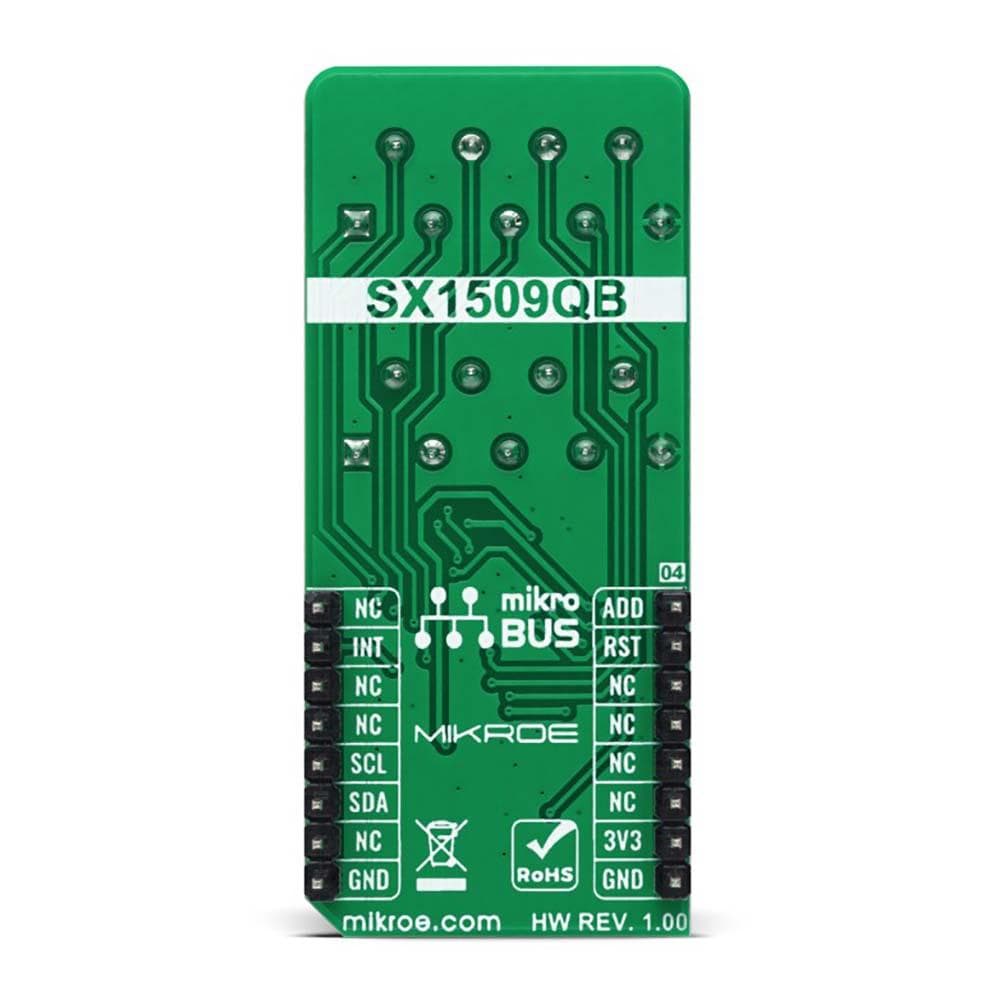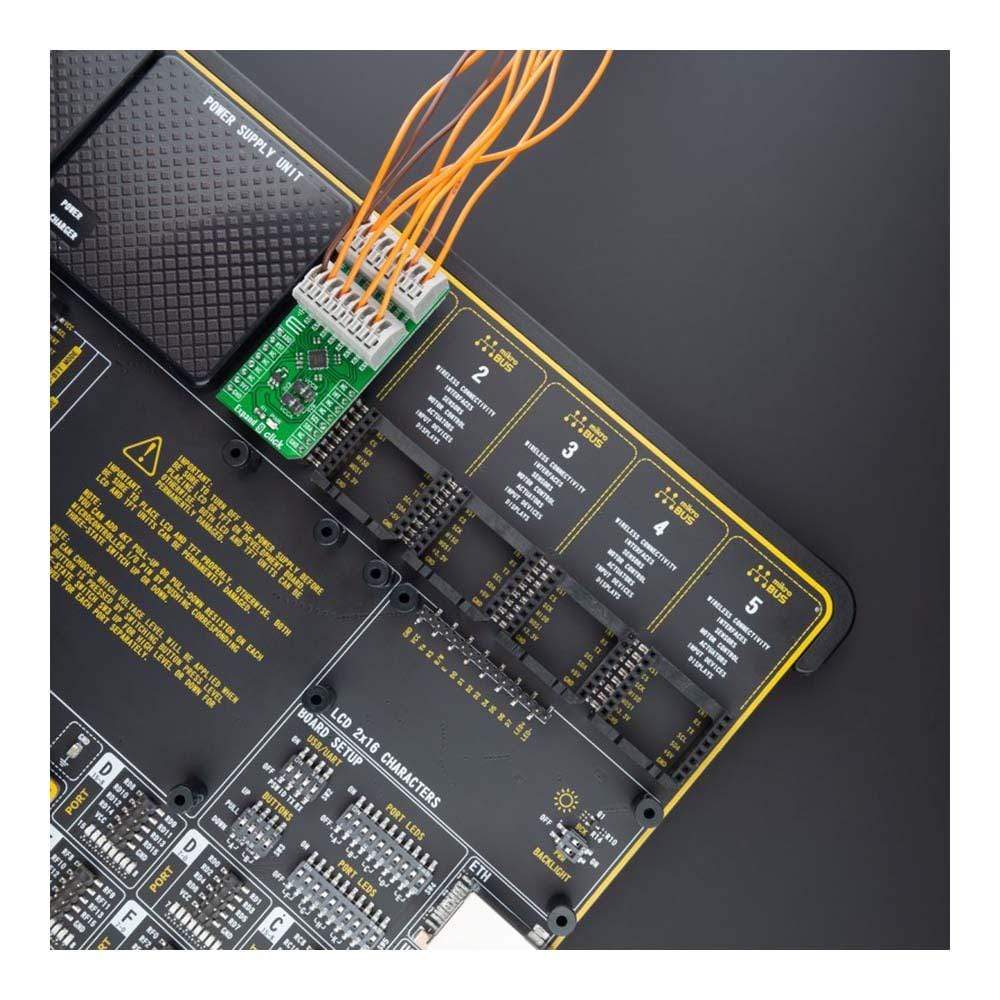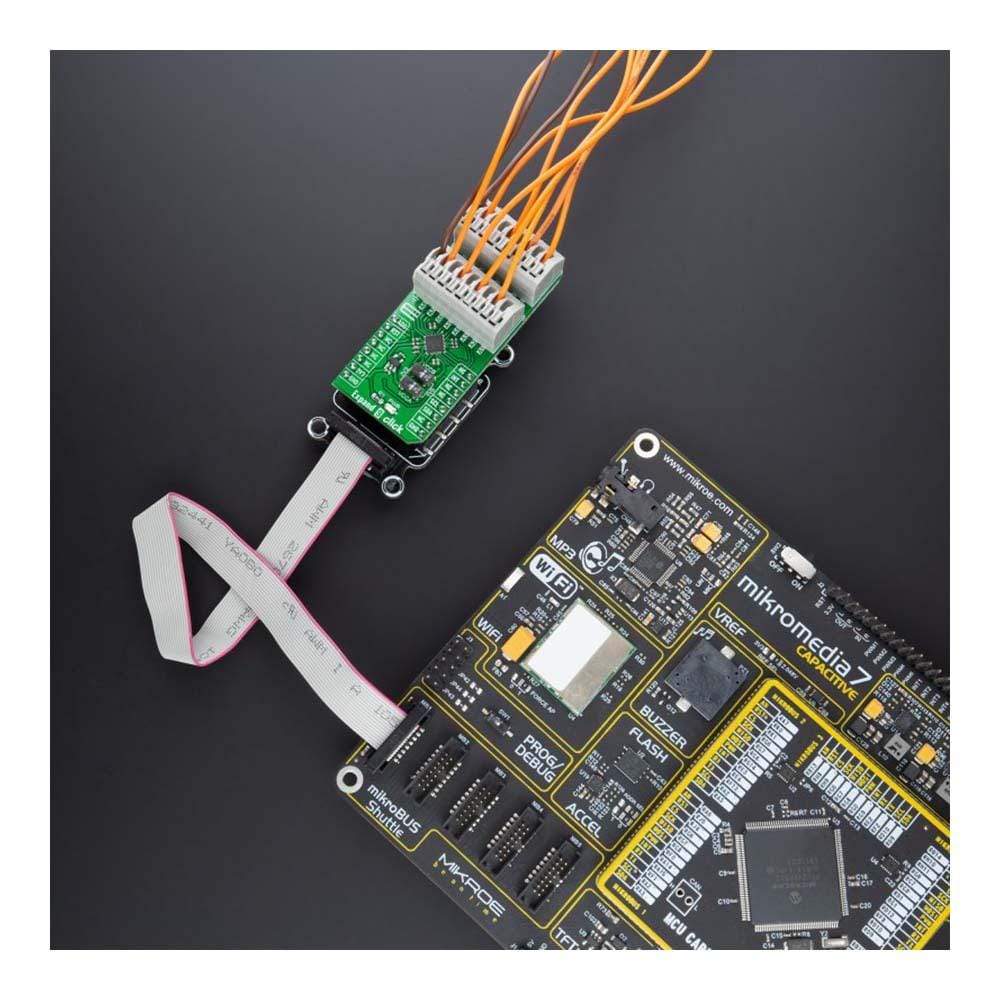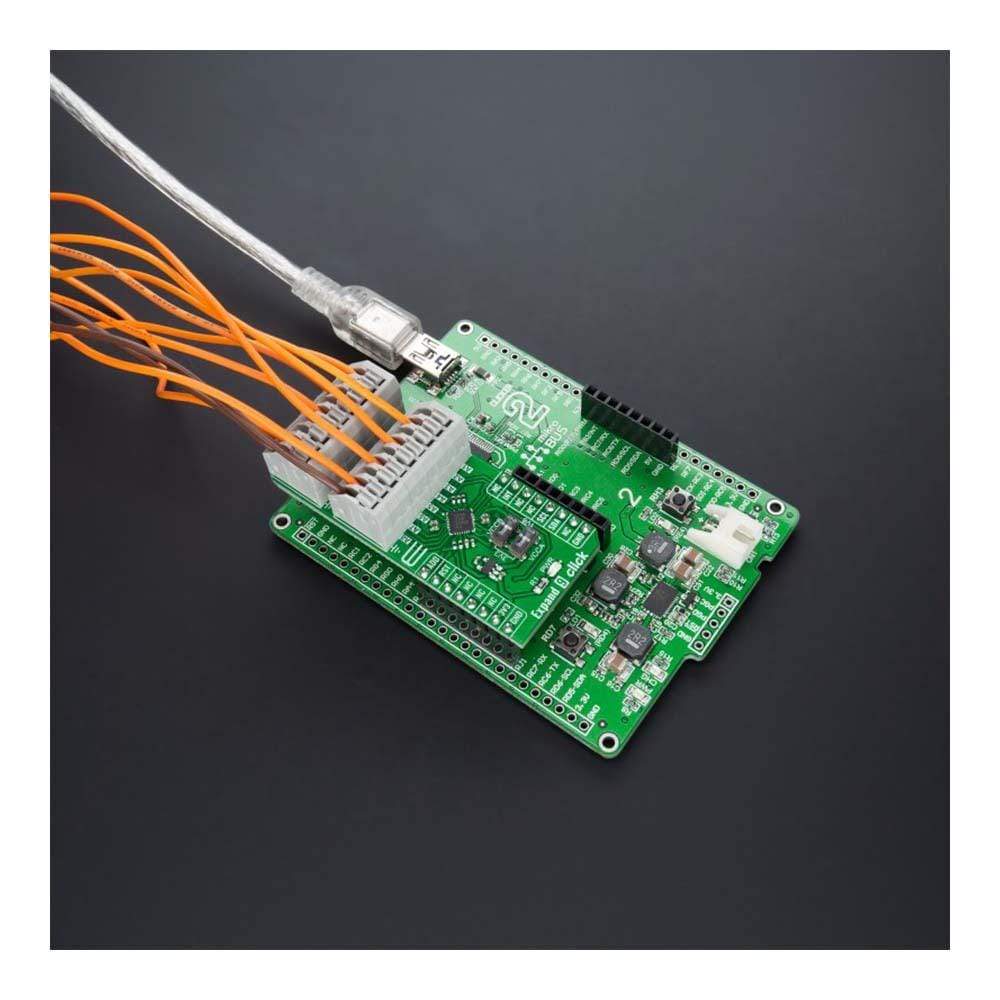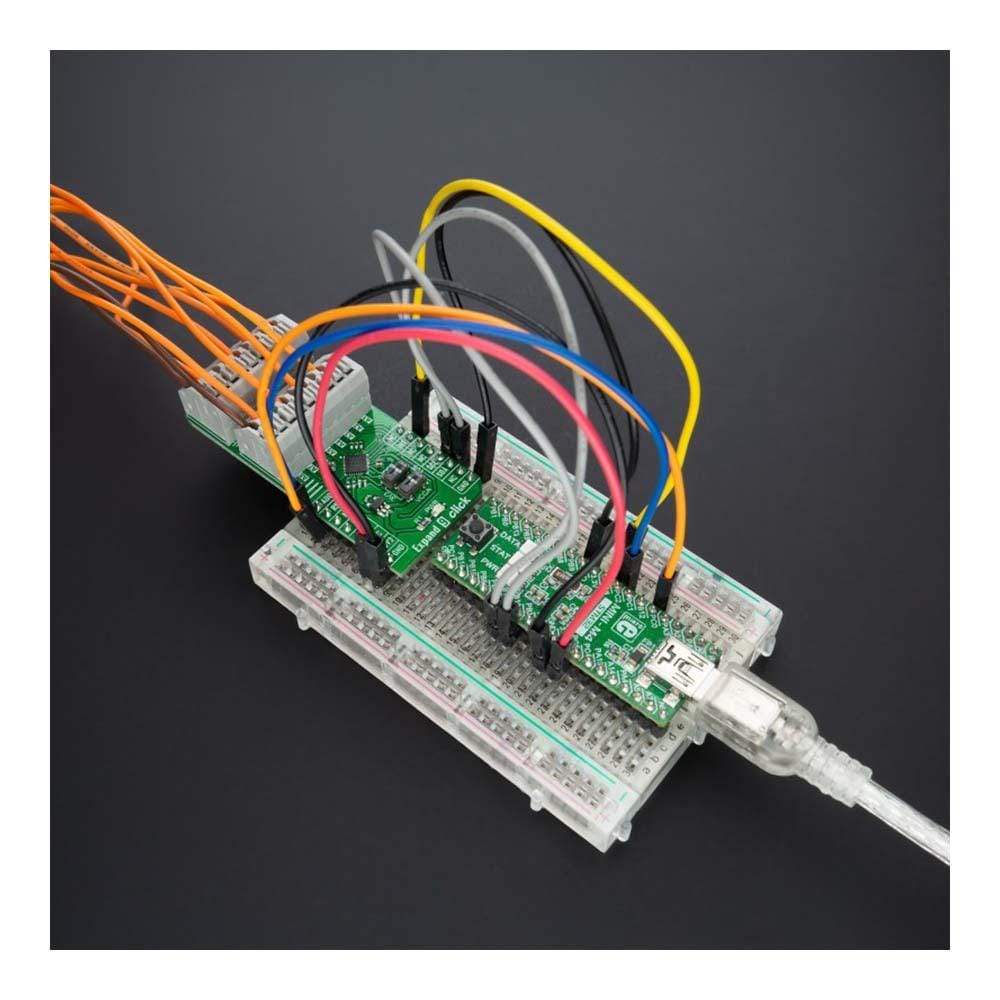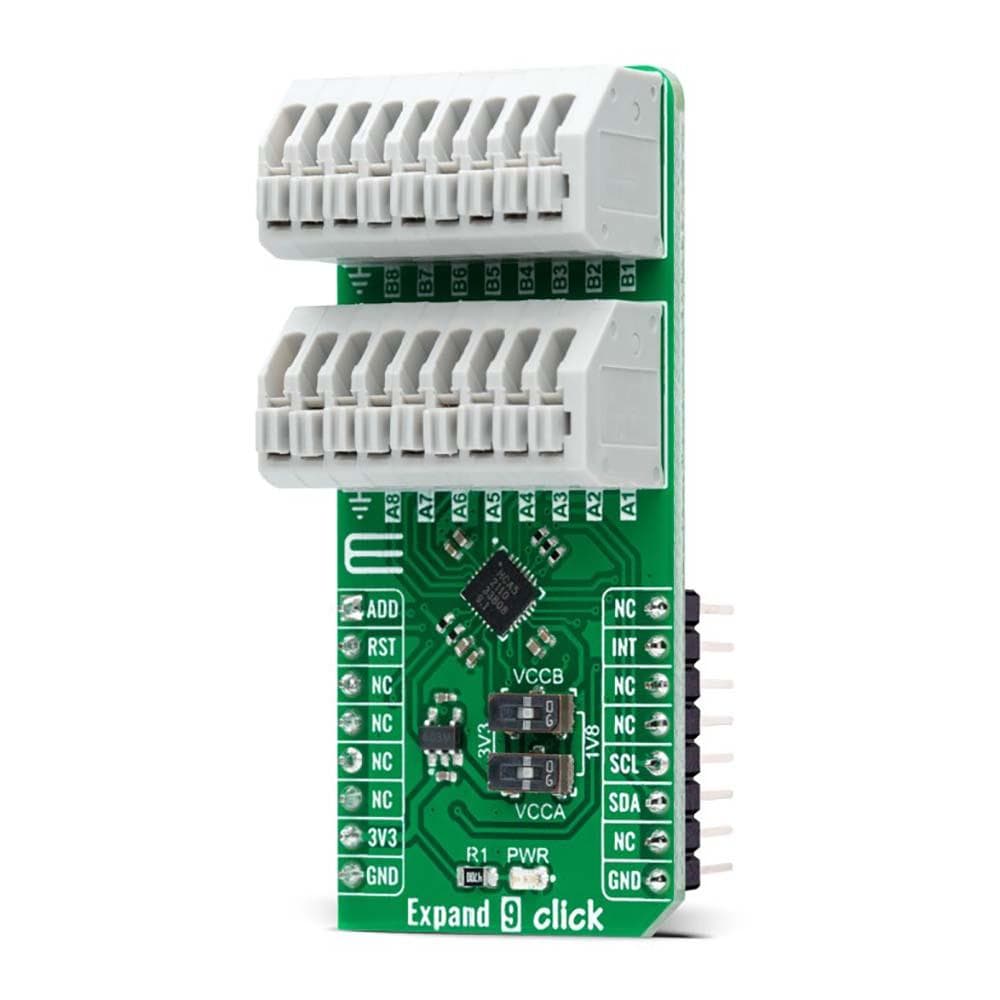
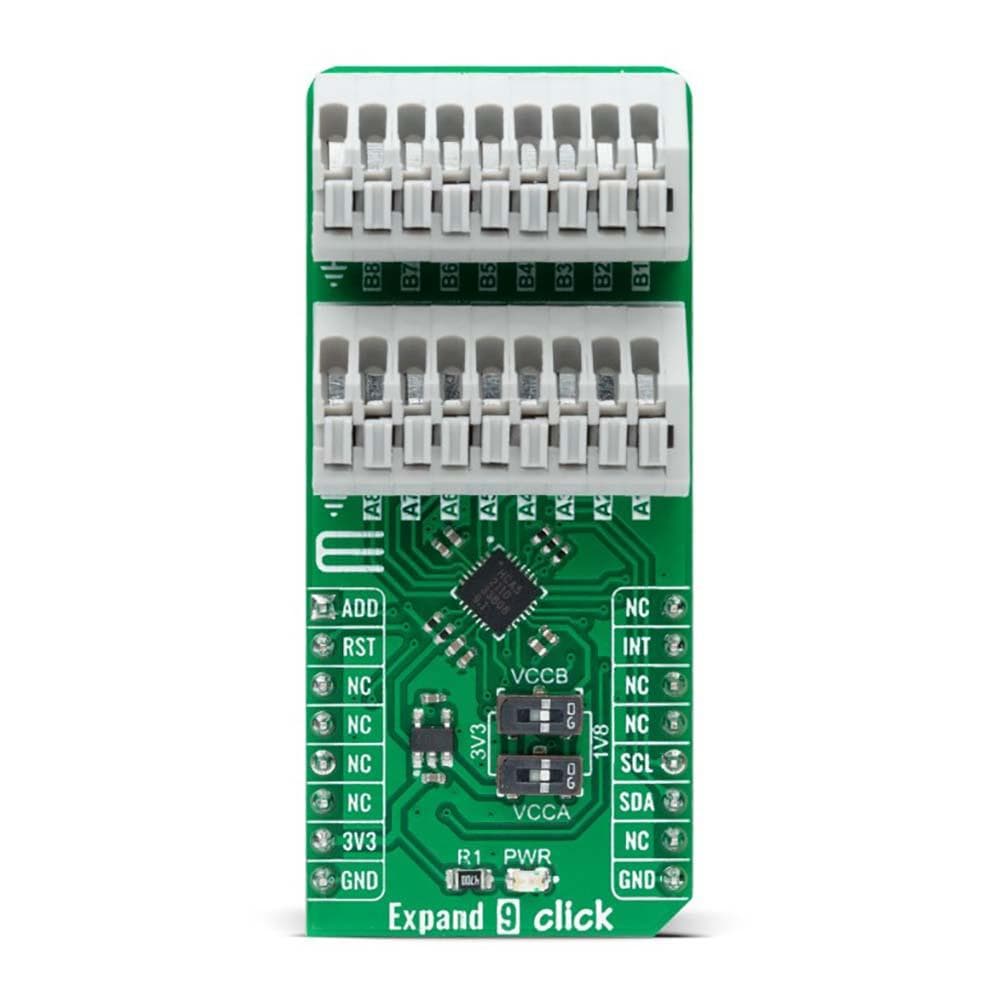
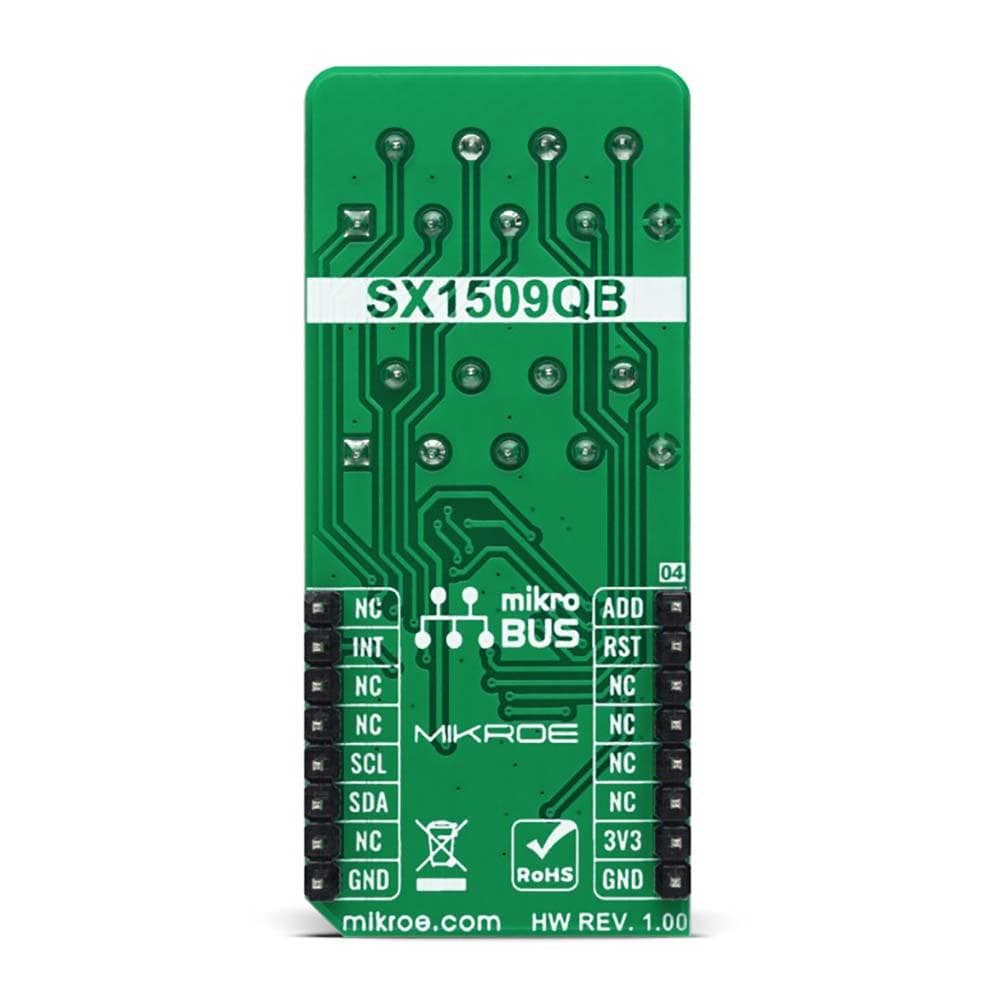

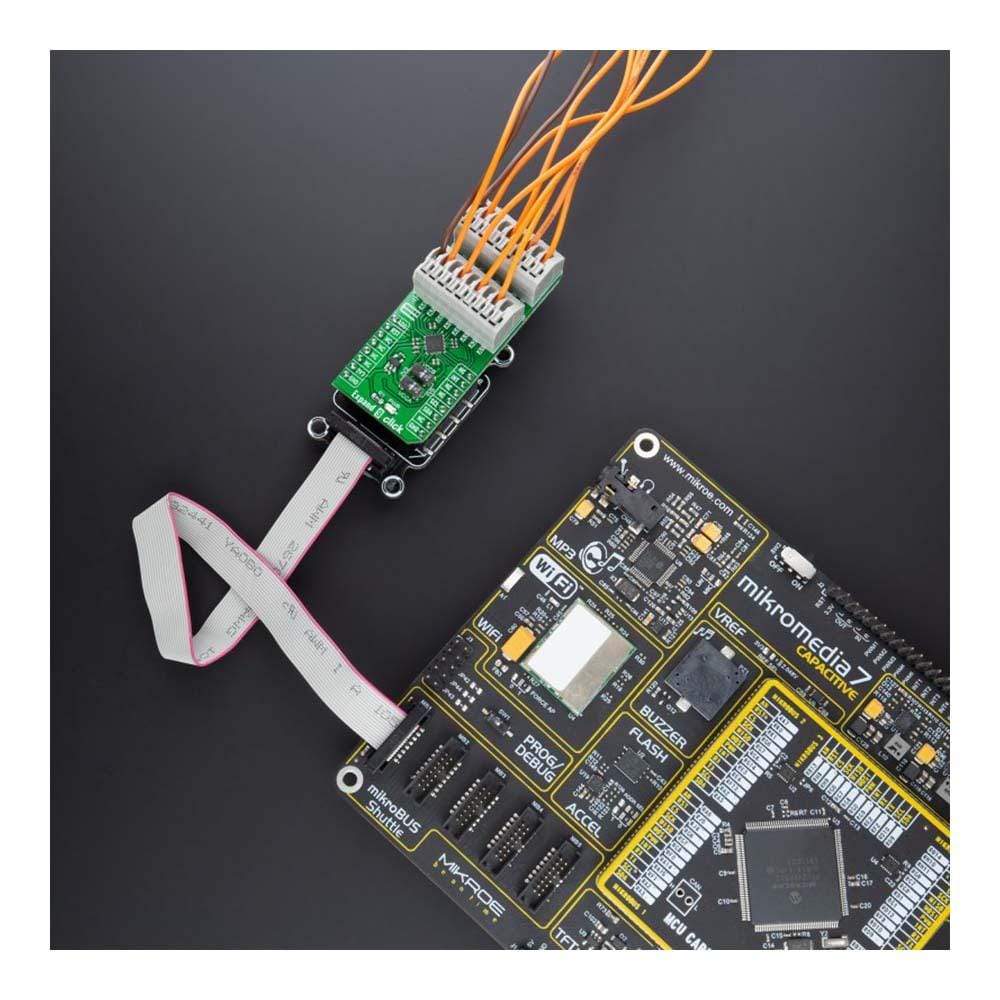
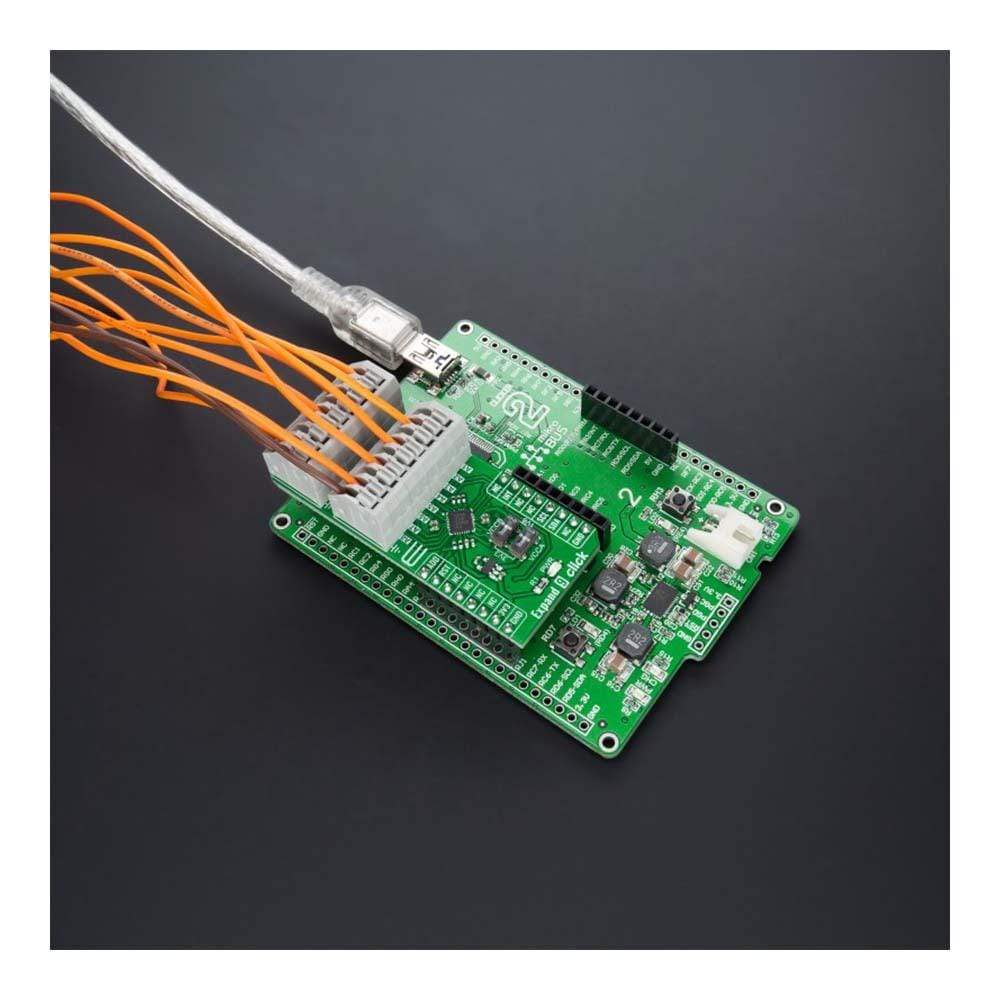
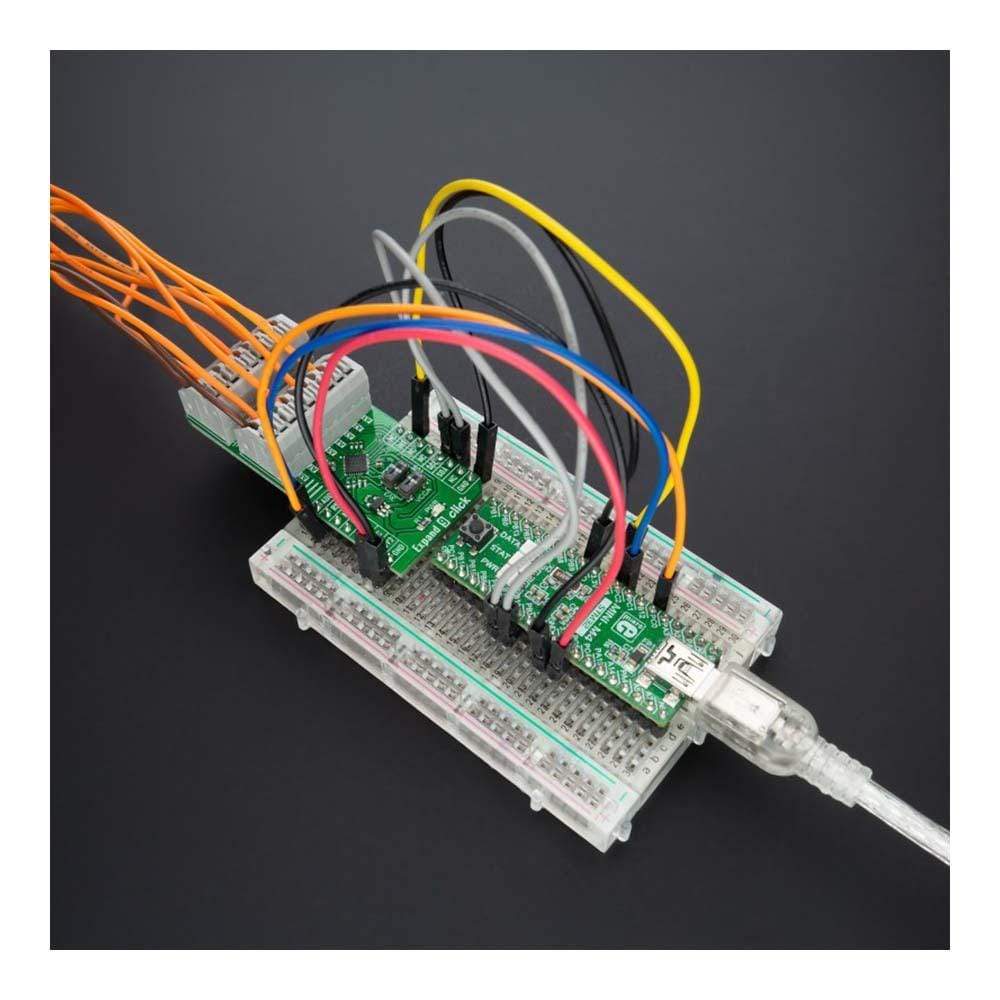
Key Features
Overview
The Expand 9 Click Board™ is a compact add-on board that contains a multi-port I/O expander. This board features the SX1509QB, the world’s lowest voltage level shifting GPIO expander from Semtech Corporation. The SX1509QB comes in a 16-channel configuration and allows easy serial expansion of I/O through a standard I2C serial interface. It also has a built-in level shifting feature making it highly flexible in power supply systems where communication between incompatible I/O voltages is required, an integrated LED driver for enhanced lighting, and a keypad scanning engine to implement keypad applications up to 8x8 matrix.
The Expand 9 Click Board™ provides a simple solution when additional I/Os are needed, suitable for low-power portable equipment, keypad scanning, driving LEDs, and many more.
Downloads
Der Expand 9 Click Board™ ist eine kompakte Zusatzkarte, die einen Multiport-E/A-Expander enthält. Diese Karte verfügt über den SX1509QB, den GPIO-Expander mit der weltweit niedrigsten Spannungspegelverschiebung von Semtech Corporation. Der SX1509QB ist in einer 16-Kanal-Konfiguration erhältlich und ermöglicht eine einfache serielle Erweiterung der E/A über eine standardmäßige serielle I2C-Schnittstelle. Er verfügt außerdem über eine integrierte Pegelverschiebungsfunktion, die ihn sehr flexibel in Stromversorgungssystemen macht, in denen eine Kommunikation zwischen inkompatiblen E/A-Spannungen erforderlich ist, einen integrierten LED-Treiber für verbesserte Beleuchtung und eine Tastatur-Scan-Engine zur Implementierung von Tastaturanwendungen bis zu einer 8x8-Matrix.
Das Expand 9 Click Board™ bietet eine einfache Lösung, wenn zusätzliche E/As benötigt werden, geeignet für tragbare Geräte mit geringem Stromverbrauch, Tastatur-Scanning, Ansteuern von LEDs und vieles mehr.
| General Information | |
|---|---|
Part Number (SKU) |
MIKROE-4853
|
Manufacturer |
|
| Physical and Mechanical | |
Weight |
0.02 kg
|
| Other | |
Country of Origin |
|
HS Code Customs Tariff code
|
|
EAN |
8606027384097
|
Warranty |
|
Frequently Asked Questions
Have a Question?
Be the first to ask a question about this.

